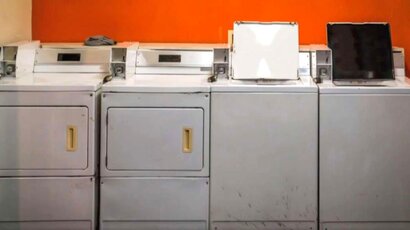A noisy water system in any house can be alarming and frightening, especially when all the pipes start to rattle or turn into noisy pipes. You are unlikely to know what is causing it, but your friendly professional plumber will tell you that a water pipe hammer is the most common cause.
Water hammer in pipes makes a loud, banging sound. It usually happens when we close taps too quickly or suddenly stop the flow of very fast-flowing water for some reason (generally not deliberate). This is why screw-down faucets were initially designed – so that we couldn’t close them too quickly and could therefore prevent water hammers in pipes.
When rattling pipes do occur, the water pipes vibrate and make a horrible noise. There are various reasons why this may happen, including damage to pipework or plumbing parts. But rattling pipes are also caused by drain pipes that have not been laid out and fitted correctly, and it might happen if tap washers are worn-out or damaged or the washer plates, clips, and straps are too tight. The thermal expansion of pipes may also cause it.
{{img:'ormond-plumber-advises-on-plumbing-rattles.jpg' | alt | title | height | width | lazyload}}
There is no doubt that it is the responsibility of plumbers to lay pipes so that noise and water hammers don’t happen. So if your plumbing starts to rattle, call a reputable Ormond plumber to sort out the problem and ensure that the pipes don’t cause unacceptable noisy water pipes.
Sometimes appliances, particularly dishwashers and washing machines, cause water hammers. If this is the case, a simple solution is to install water hammer arresters. Those manufactured for washing machines are installed in the waterline hose, and those made for dishwashers usually are installed under the sink.
Another cause of plumbing rattles is airlocks, which are collections of air bubbles at the top or a high point of any plumbing pipeline. If there is an airlock in your water system, when you turn the tap on, you will probably hear a hissing or gurgling sound in the pipes, and the water won’t flow out of the tap. It depends on where the airlock is, but you may be able to force it back up the pipe by taking a damp cloth and plunging it forcefully against the spout of the affected tap so that suction is created.
Houses built after the 1960s usually have air chambers incorporated in vertical pipework near laundry tubs and sinks. When the chambers are full of air, the air prevents rattling. But sometimes, the chambers become saturated and ineffective. If this seems to be the problem, try shutting off your water supply at the mains, and then open all the faucets or taps and let all the pipes drain. Once drained, the air chambers will fill up with air again, and the rattling should stop.
If airlocks keep forming, it may be that the storage tank isn’t filling up as quickly as it drains. What happens then is that the pipes suck in air instead of water. Check that the stopcock is opened fully. If the problem persists, you might have a faulty ball valve controlling the water supply to the tank, in which case you will need to call in a reliable Ormond plumber or someone in your area.
Drains can also be noisy; for example, when waste going down a drain draws air through the trap seal. Usually, this happens when part of the discharge pipe from sanitary fixtures to gullies is vertical or nearly vertical. The only way to stop this is to call in a plumber from Precision Electrical and Plumbing to vent the system and get rid of it immediately.
{{author:bio}}
Find them on their website: Precision Electrical & Plumbing, Facebook and LinkedIn.
A plumbing emergency can happen anytime if you don’t maintain your pipes. Know how the most common plumbing problems can be prevented.
Read MoreConstantly facing frequent clogging of your drains and pipes? Get some great tips on how to prevent drain major drain blockage at home in our guide.
Read MoreShould you replace your old appliances to save on power bills? Find out the pros and cons of replacing your old appliances with newer, more energy-efficient models to minimise your energy costs.
Read More


